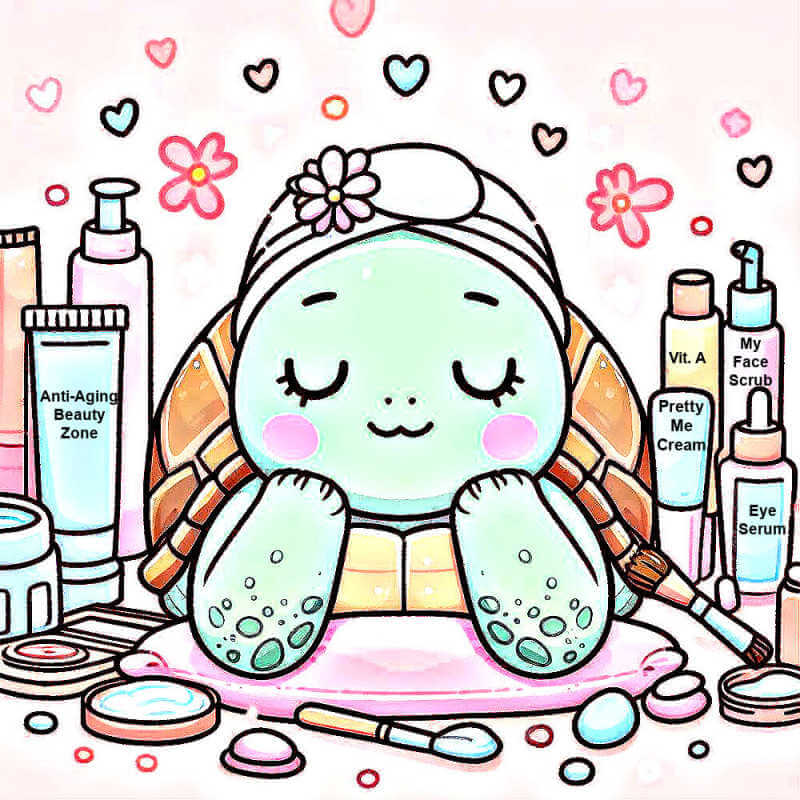As an Amazon Associate, I earn from qualifying purchases and other affiliate links. I only recommend products I’ve tried or researched.
- Home
- Skincare Guide
- Homemade Skincare
- Korean Face Scrub At Home
How to Make Korean Face Scrub (At-Home Recipes)
by: Linda Robison / Facial Fitness Specialist
K-beauty exfoliation is all about gentle polish—think rice flour, mugwort, and red ginseng. If you’re looking for a Korean face scrub at home, these traditional ingredients lift dull buildup without harsh rubbing so skin looks smoother and more “glass-like.”
Below are three quick, at-home Korean face scrub recipes plus simple usage tips.
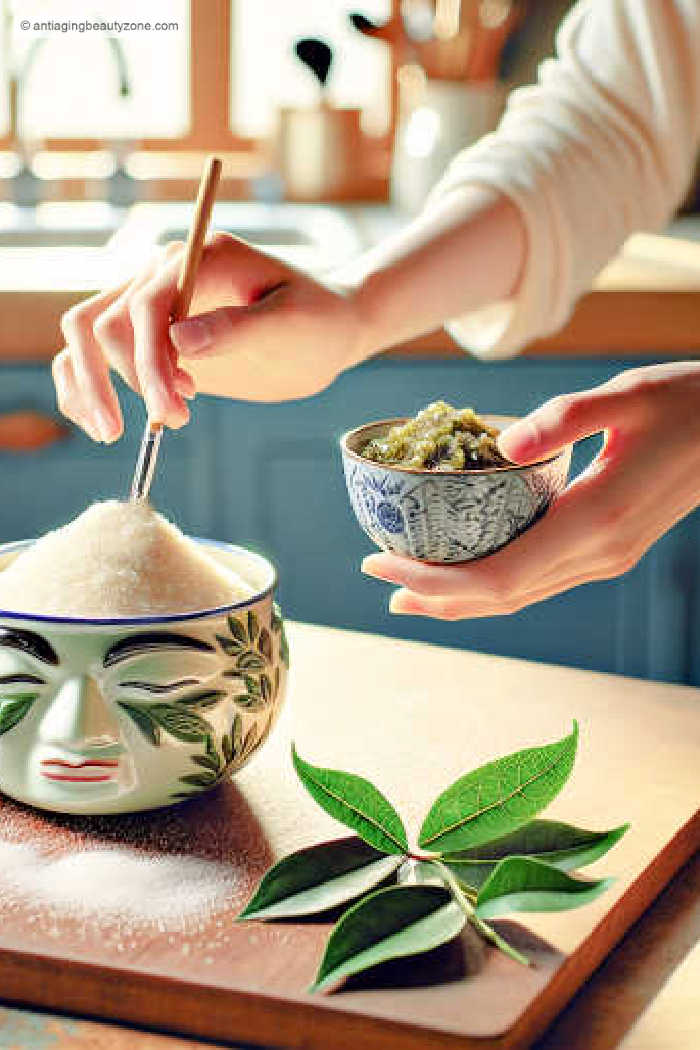 Korean Face Exfoliating Recipes.
Korean Face Exfoliating Recipes.How to use (Works for all three scrubs)
Use this same simple method for any of the Korean face scrubs below.
- On damp skin, massage with light pressure for 30–60 seconds.
- Rinse, moisturize, and use SPF in the morning.
- Start 1–2×/week (more isn’t better).
New to exfoliation? Start with gentle exfoliation over 40.
Korean face scrub benefits
Here’s what sets K-beauty style exfoliation apart.
- Smoother feel with a soft, micro-polish finish
- • Pairs well with hydrating essences/toners for a “glass-skin” look
- • Focuses on barrier-friendly, gentle exfoliation (light pressure, fine grains)
Korean face scrub recipes (at home)
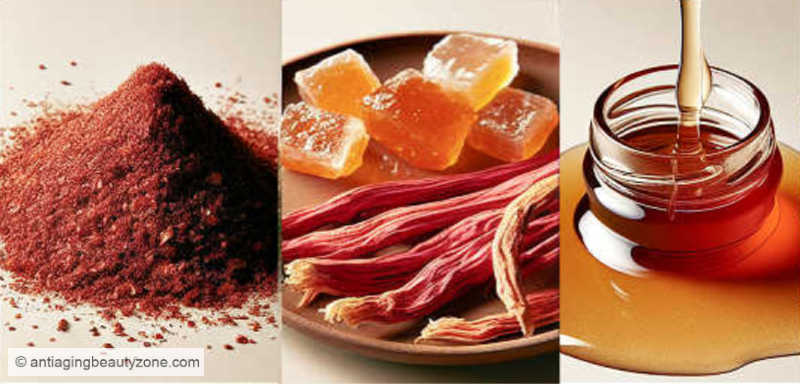
1. Red ginseng sugar polish (revitalize)
- 2 tbsp white sugar
- 1 tsp red ginseng powder(available at Korean grocery stores or online)
- 1 tbsp olive oil
Use: Mix dry → add oil → massage 30–60 sec → rinse.
Notes: Red ginseng is a classic in K-beauty; keep pressure light so it stays gentle.
Is it safe? Topical use is common in Korean skincare. If you’re pregnant, nursing, or have hormone-related concerns, ask your clinician first.
2. Mugwort soothing polish
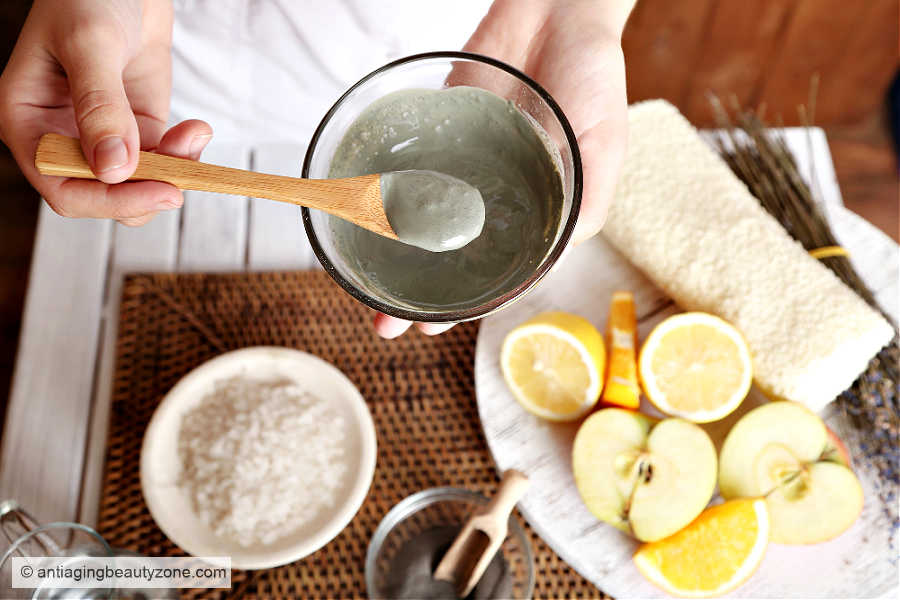
- 2 tbsp white sugar
- 1 tsp mugwort (finely ground) (available at Korean grocery stores or online)
- 1 tbsp jojoba or good quality face oil
Prep: Grind mugwort to a fine powder so it’s soft on skin.
Use: Mix → gentle massage 30–60 sec → rinse.
Notes: Mugwort (“ssuk”) is loved in K-beauty for comforting stressed or reactive skin. Patch test if you’re sensitive.
3. Rice flour & almond oil enzyme-style polish
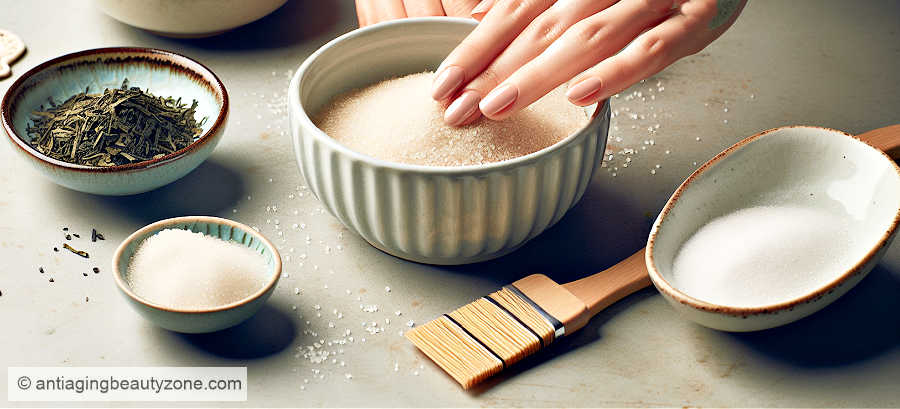
- 1 tbsp white sugar
- 1 tsp rice flour
- 1 tbsp almond or olive oil
Use: Mix → massage lightly → rinse.
Why rice? Finely milled rice flour gives a silky, micro-polish that fits K-beauty’s smoother, more light-reflective look.
Want more basics? See sugar scrub for face.
4. Korean-inspired honey-oat comfort mask (dry skin)
- 2 tbsp finely ground oatmeal
- 1 tbsp honey
- 1 tbsp yogurt (optional)
Use: Apply 10–15 min (no scrubbing), then rinse. Great when skin needs soothing more than polish.
Prefer a different brightener? Try turmeric face scrub recipe.
Storage & shelf life (k-beauty scrubs)
Here’s how to store these Korean-inspired scrubs so they stay fresh and gentle.
- Oil-only mixes (no water): Keep in a cool, dark spot and use a clean, dry spoon. Small batches are best; up to 2 weeks. If smell or texture changes, remake.
- Rice flour polish: Rice can sour faster—use within 7–10 days. Keep the jar tightly closed.
- Mugwort polish: Botanicals fade with light; use an opaque/amber jar. Aim for 1–2 weeks if oil-only and kept dry.
- Red ginseng polish: Can tint light towels/jars; store in non-porous containers and wipe rims clean. Use within 1–2 weeks if oil-only.
- Honey/yogurt mask (no scrub): Refrigerate and use within 48–72 hours.
- Label & date: Mark the jar and make small, fresh batches.
Face scrub tips (k-beauty style)
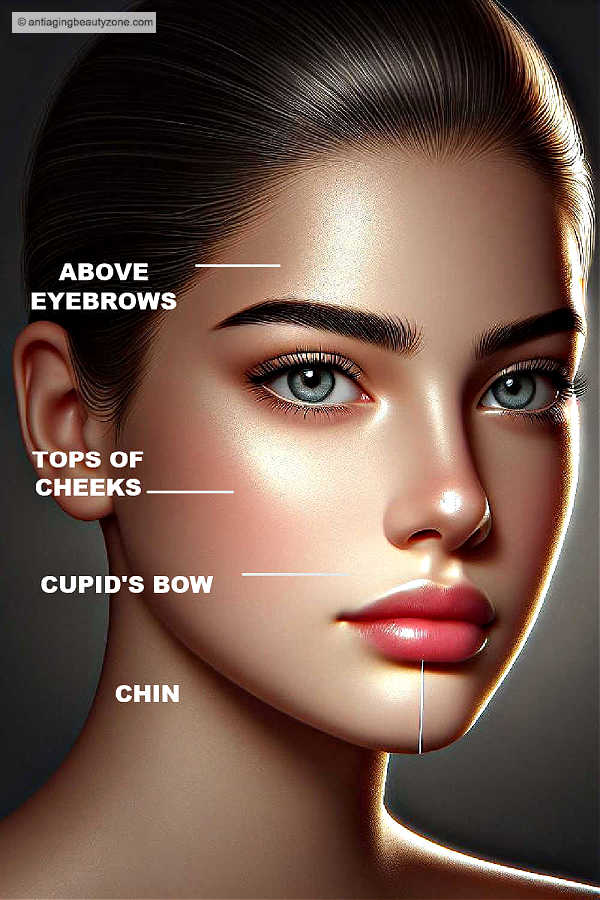
Keep these quick tips in mind for the best, gentlest results.
- Keep grains fine; pressure light (polish, don’t scour).
- Focus on “highlight points” (cheekbones, bridge of nose, brow top) for a natural glow.
- Turn any scrub into a mask by leaving it on 10–15 minutes before rinsing.
- Adjust texture with a splash of oil or extra rice flour until it’s soft and a bit grainy.
Side effects
As with any exfoliation, keep these cautions in mind.
- Patch test first; discontinue if irritation occurs.
- Don’t over-exfoliate; avoid the eye area.
- Pregnant or breastfeeding? Ask your clinician before trying new ingredients.
- Red ginseng is widely used topically; if you have hormone-related concerns, consult your doctor.
Frequently Asked Questions:
Question: What’s a good Korean face scrub at home for dry skin?
Question: What’s a good Korean face scrub at home for dry skin?
Answer: Try the Honey-Oat Comfort Mask above (no scrubbing). It soothes while softening texture.
Question: What’s the difference between a sugar scrub and an exfoliating scrub?
Question: What’s the difference between a sugar scrub and an exfoliating scrub?
Answer: Sugar scrubs = physical exfoliation. “Exfoliating scrubs” can also include powders (like rice flour) for a finer, micro-polish feel.
Question: Is salt or sugar better for face scrubs?
Question: Is salt or sugar better for face scrubs?
Answer: For the face, choose fine sugar or finely milled powders (rice flour). Salt is typically too coarse and can be drying.
Question: How often should I use a Korean face scrub?
Question: How often should I use a Korean face scrub?
Answer: Start 1–2×/week with gentle pressure; increase only if skin tolerates it well.
Want simple facial fitness tips you can actually stick with?
I share quick routines, skincare tweaks, and what’s working for me — straight to your inbox.
About the Author:
Linda Robison is a Facial Fitness Specialist and the founder of Anti-Aging Beauty Zone. With decades of hands-on experience, she shares practical, natural ways to lift and brighten mature skin—without expensive or invasive treatments.
Before you go ....
Please tap on the💙in the bottom right corner if you found this page helpful.
FOLLOW ME FOR MORE TIPS:
SHARE OR SAVE FOR LATER:





